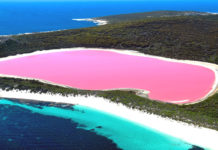The remains were found by officers on the island of Sakhalin, in the most eastern piece of Russia, and in the wake of being inspected by marine masters it was discovered to be a beluga whale. The pictures of the skeleton were snapped by the troopers before it was expelled from the shoreline with specialists discounting the likelihood of it being a fish or a crocodile or croc.
The officers who found the bones snapped pictures of the obscure animal before it was taken away by Russian unique strengths.
Anyhow in spite of the theories that it could have been the remaining parts of an ancient animal, it turned out the bones were truth be told from an expansive beluga whale.
The remaining parts were found on the shoreline in Sakhalin, an island in the most eastern piece of Russia, which is close to Japan.
The pictures of the skeleton, which initially rose in 2006, were snapped by the troopers before it was expelled from the shoreline by Russian extraordinary strengths.
However introductory tests on the bones and teeth demonstrated that it was not a fish, while the skeleton demonstrated that it wasn’t a crocodile or gator.
It was additionally said to have measured in at around 20 feet long and had skin, with hair and hide.
Theories on what the creature may be had extended from a whale to a plesiosaur, a marine animal from the triassic period, before it was created it was a beluga whale.
Anyway after a few marine masters took one take a gander at the pictures of the skeleton’s skull, they immediately settled that it was a beluga whale.
They likewise discharged the picture of a whale’s skull to demonstrate the comparability of the two sets of bones.
Before being demonstrated to be beluga whale, theories on what the remaining parts could be had gone for a whale to a plesiosaur, an ancient marine animal from the triassic period.
A year ago the remaining parts of a comparable looking animal with a four-meter long body and horns, cleaned up in Villaricos, Spain.
A heartbreaking swimmer discovered the head before running over whatever remains of the body.
It was obscure the accurate inception of the animal and because of the degree of the decay it implied the vast majority of the remaining parts must be covered for security reasons.
AW: Arun Kumar



























